Over the last few weeks, you’ve likely seen plenty of summaries of Kingdom Hearts as a series. While these can be handy, it’s understandable that there are a lot of people who want to actually play the games before they get in on the Kingdom Hearts III hype. As someone who has played the series since childhood, and at one point hosted a podcast and fansite for the series (hey, we were all teenagers once), I’m here to tell you which games you really need to play, which games you can skip, and what order you should do this all in.
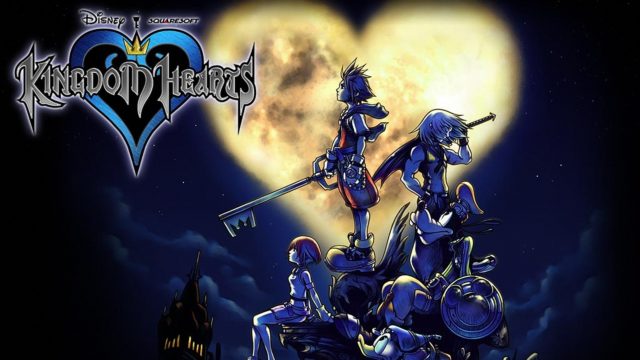
Kingdom Hearts (2002) (Part of the Kingdom Hearts 1.5+2.5 HD Remix collection)
You need to play the first Kingdom Hearts to get into the series. This is the game that introduces the three primary characters of Kingdom Hearts, Sora, Riku, and Kairi. Mickey Mouse is shown to be a King, with Donald and Goofy as his loyal companions. The main enemies of the series, the Heartless, are introduced here as well, alongside Sleeping Beauty’s Maleficent, who plays a large role in the overall plot as the series goes on.
Kingdom Hearts is all about Sora, Donald, and Goofy travelling to different worlds based on multiple Disney movies in search of Mickey and Riku. The first game is the most Disney oriented game of the franchise, and ties classic Disney villains like Jafar and Captain Hook into the main plot outside of their respective worlds. The story, while silly, is pretty easy to understand at this point in the franchise. The combat is clunkier than in future entries, but still functional and rather fun. Even though it isn’t the first game in-terms of the timeline (as a prequel exists), you should definitely play Kingdom Hearts first, as it’s the best introduction to the insanity to come.
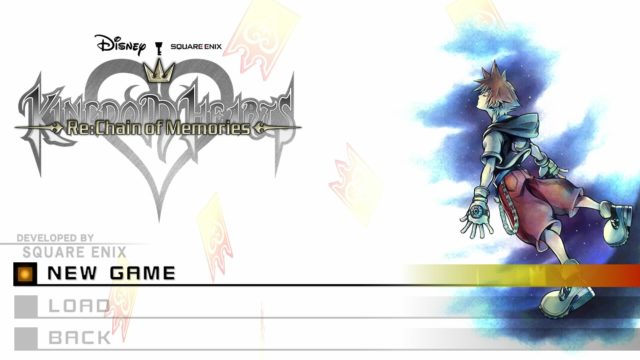
Kingdom Hearts (Re:) Chain of Memories (2004 on Gameboy Advance, 2008 on PS2.) (The PS2 version is part of the Kingdom Hearts 1.5+2.5 HD Remix collection)
This is the entry a lot of older fans didn’t know they had to play before Kingdom Hearts II came out. Originally released on the Gameboy Advance, a PS2 remake would later come out (after Kingdom Hearts II’s release) featuring voice-acting and an enormous graphical overhaul.
Chain of Memories starts right after Kingdom Hearts, following Sora, Donald, and Goofy as they wander around a mysterious castle, dubbed Castle Oblivion, while being attacked by members of the mysterious Organization XIII. All the while, everybody’s memories are being altered by Naminé, a secretive girl who mostly just makes crayon drawings in a notebook. Riku and Mickey find their way to the castle as well, as Riku tries to come to terms with the darkness that he faced in Kingdom Hearts. The Disney worlds are the same as the first Kingdom Hearts this time around, as Sora is technically visiting memories of them, with slightly different stories.
The gameplay of Chain of Memories is the biggest obstacle for people who want to play the entire series. Unlike the rest of the series, Chain of Memories features a real-time card-based combat system, which is as strange as it sounds. While there’s quite a lot of depth to the card system, it’s a weird combat system that is definitely harder to get into than the rest of the franchise. Still, the plot of Chain of Memories is too important to miss. It introduces Organization XIII, the villainous group that becomes central to the rest of the series. Axel, the fan-favorite Organization member, is also introduced here, and he later goes on to become central to the core story. I’d recommend Re: Chain of Memories (the remake), as it’s easier to obtain and easier to get into. If you find yourself really hating the gameplay, be sure to at least watch the cutscenes (for both Sora and Riku’s storylines), or you’ll be lost going into Kingdom Hearts II.
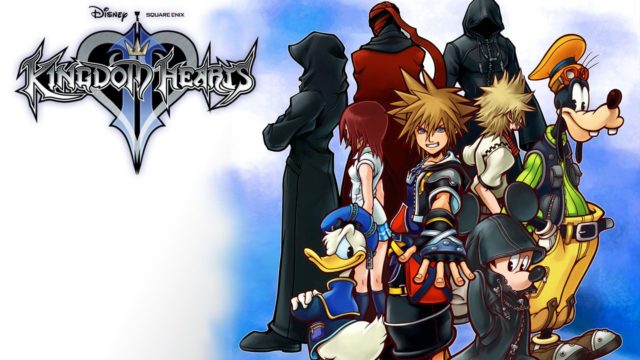
Kingdom Hearts II (2006) (Part of the Kingdom Hearts 1.5+2.5 HD Remix collection)
Kingdom Hearts II is a lot of people’s favorite game in the franchise, and for good reason. The story is more ridiculous, but a plethora of new Disney worlds are introduced, alongside a hugely-improved combat system that greatly builds on the combat of the first Kingdom Hearts. Don’t worry, the card system never comes back.
Taking place approximately one year after Chain of Memories, Kingdom Hearts II introduces players to Roxas, a young boy who happens to be Sora’s Nobody (more on that soon). After a long tutorial section, players once again take control of Sora, who has been sleeping for about a year, having his memories recovered after the events of Chain of Memories. After facing half of Organization XIII in Chain of Memories, Sora and friends find themselves battling the other half of the Organization and Maleficent, now joined by Disney villain Pete, who are manipulating the game’s many Disney worlds in the pursuit of the titular Kingdom Hearts. Keyblade in hand, Sora battles the Organization as he searches for Riku and Kairi, and learns more about the mysterious Roxas.
This game is incredibly important to the plot of the series, meaning you can 100% definitely, not skip it. Nobodies, the husks left behind when someone turns into a Heartless, are introduced, and they’re a big deal for the rest of the series. Organization XIII, Roxas, Ansem the Wise, and Xehanort are all major figures in the series that are either introduced or greatly expanded upon in Kingdom Hearts II. Like I said earlier, the gameplay of Kingdom Hearts II is far better than any previous installments, making this one of the easier games to get into (and one of the easier games in the franchise overall, difficulty-wise).
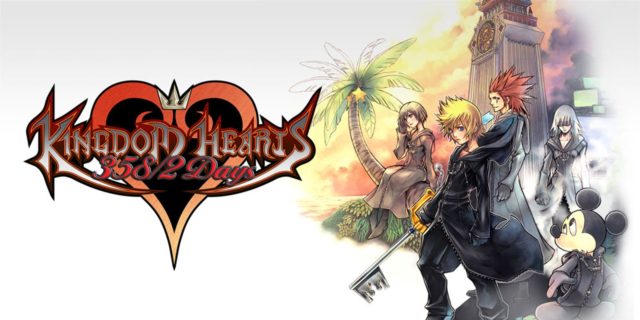
Kingdom Hearts: 358/2 Days (2009) (Cutscenes are part of the Kingdom Hearts 1.5+2.5 HD Remix collection)
Here’s the first game that is technically skippable. You definitely don’t need to play the original Nintendo DS game, but I’d highly recommend watching the cutscenes on the collection. Though I’m personally a big fan of the game, its place on the Nintendo DS means that it’s somewhat difficult to control, though the ability to play with others as different members of Organization XIII is still quite neat.
358/2 Days is about Roxas, taking place during and after Chain of Memories, leading right into Kingdom Hearts II. As a new member of Organization XIII, Roxas befriends fellow members Axel and the mysterious Xion: the group’s 14th member who can also wield a Keyblade. The internal politics of Organization XIII are mostly background noise, as the important thing to take from Days’s story is the relationship between Roxas, Axel, and Xion, who find themselves pulled apart as they work for the Organization while Sora sleeps.
Xion is the most important character to come out of Days, so the cutscenes should be watched if only to learn about her. Roxas and Axel’s friendship is also built-on a great deal, making their relationship in Kingdom Hearts II far more bittersweet. You can skip this game, but you should check out the cutscenes.
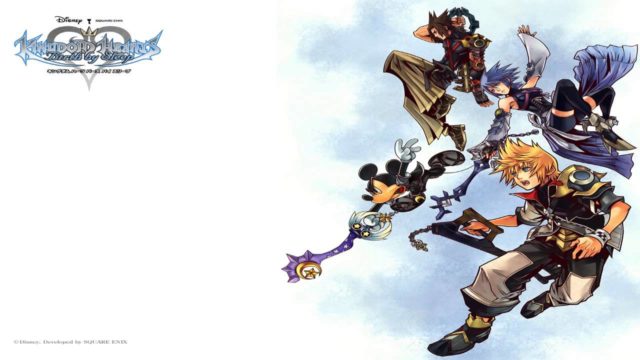
Kingdom Hearts: Birth By Sleep (2010) (Part of the Kingdom Hearts 1.5+2.5 HD Remix collection)
Birth by Sleep is held in the same esteem as Kingdom Hearts II, with many considering it to be the best game in the franchise. Birth by Sleep is actually a prequel to the entire series thus far, taking place ten years before the beginning of the original Kingdom Hearts. As a unique first for the series, Birth by Sleep has you play as three different characters, whose stories intertwine at many points, eventually leading to a depressing conclusion. Originally released for the PSP, the game eventually found its way to the PS3 and PS4 through the HD Remixes.
Players play as Ventus, Terra, and Aqua: three young Keyblade wielders who train to become Keyblade Masters under the watchful eye of Master Eraqus. Master Xehanort, an old friend of Eraqus’s, comes to the Land of Departure to see Aqua and Terra undergo the Mark of Mastery exam. Unbeknownst to Eraqus and his students, Xehanort has ulterior motives, as he and a mysterious masked Keyblade-wielding boy jumpstart a conflict that sends the three students on separate journeys across numerous Disney worlds.
Birth by Sleep fully introduces Master Xehanort, who, through many forms, becomes the main villain of the entire series. Terra, Ventus, and especially Aqua are all essential characters going into Kingdom Hearts III, as is the masked boy Vanitas. As far as stories go, Birth by Sleep is a fair bit darker than previous entries, or at least as dark as a game featuring Mickey Mouse can get. The gameplay is slightly different than KIngdom Hearts II’s, focusing on customizable commands and combat styles that make each character feel far different from one another. Playing Birth by Sleep is necessary to understand Kingdom Hearts III, so don’t skip this one.
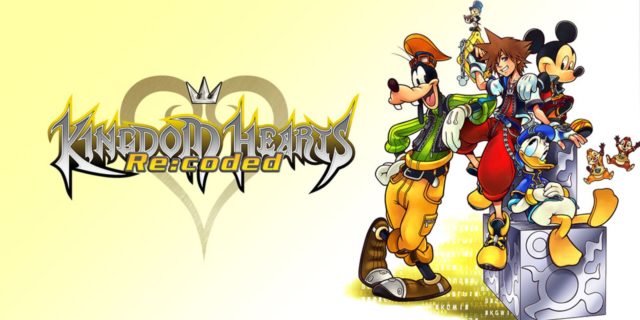
Kingdom Hearts: Re: Coded (2011) (Cutscenes are part of the Kingdom Hearts 1.5+2.5 HD Remix collection)
Here it is, the most skippable game in all of Kingdom Hearts. Though there are minor references to it here and there, reading a detailed synopsis is really all you need to do to understand Re: Coded, as it isn’t particularly important to the overarching story of Kingdom Hearts. You could watch the remastered cutscenes of the game through 2.5 HD Remix, but I’d argue that you really could just read a summary of this one.
Re: Coded is a remake of a mobile game, and takes place after Kingdom Hearts II. Jiminy Cricket, who has chronicled Sora’s adventure thus far, finds out something is wrong with his journal. King Mickey explores the journal by creating a digital version of Sora, called Data-Sora, who has to clear the “bug blocks” that are infecting Jiminy’s journal.
The DS version of the game experiments with a number of different gameplay styles, to varying degrees of success. If you look up the basic details of Re: Coded’s plot and Data-Sora as a character, you can easily skip this one.
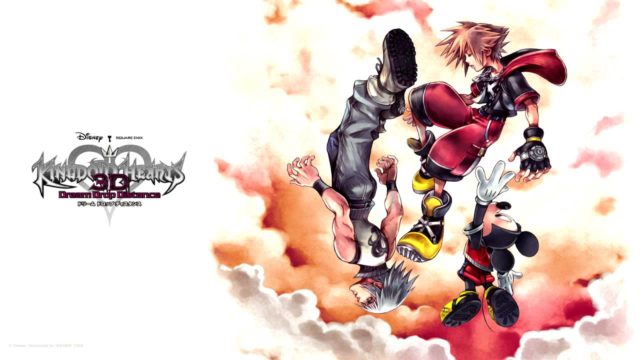
Kingdom Hearts 3D: Dream Drop Distance (2012) (Part of the Kingdom Hearts 2.8 Collection)
Originally released for the Nintendo 3DS, Dream Drop Distance takes place after Re: Coded, and is far more important to the plot than you’d think.
To prepare for the inevitable battle with Xehanort, Sora and Riku undergo the Mark of Mastery Exam in the hopes of becoming Keyblade Masters. The two have to unconsciously “dive” into sleeping worlds that have been devoured by darkness, freeing them while mastering the power of “waking”. Xehanort and his evil pals mess things up for the two though, who learn about Xehanort’s grand plot. New Keyblade wielders are introduced, as are new allies and villains that become vital in the battle against Xehanort. Time travel is introduced to Kingdom Hearts, which makes everything more complicated.
New Disney worlds, an entirely new mobility system titled “Flowmotion”, and characters from the snubbed DS classic The World Ends With You are some of the biggest features of Dream Drop Distance, which plays a lot like Birth by Sleep. The plot is necessary to understanding Kingdom Hearts III, so make sure you play this beforehand.

Kingdom Hearts 0.2: A Fragmentary Passage (2016) (Part of the Kingdom Hearts 2.8 Collection)
Taking place from the end of Birth by Sleep to the end of the first Kingdom Hearts, Fragmentary Passage is a very short playable story that follows Aqua after the events of Birth by Sleep. This is a short entry, because Fragmentary Passage is a short game. It features some character building between Aqua and Mickey, but its story isn’t entirely essential to Kingdom Hearts III. You can skip it if you want, but it’s so short that you may as well play it just for a bit of extra info on Aqua, and to get a taste of Kingdom Hearts III’s combat system.
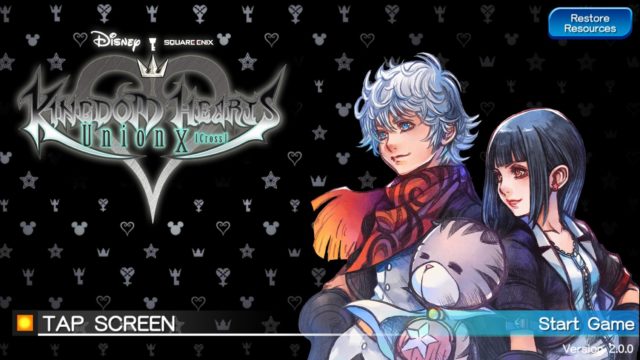
Kingdom Hearts Unchained/X/Union Cross/Back Cover (2016) (Back Cover is part of the Kingdom Hearts 2.8 Collection, while Union Cross, a rebranded update of Unchained/X, is available on mobile devices)
Yes, the Kingdom Hearts mobile game actually features some pretty important lore to the entire main series. Crazy, I know, but this is Kingdom Hearts we’re talking about. Union Cross takes place before any of the other Kingdom Hearts games. Playing as an avatar/yourself, you assume the role of a Keyblade Wielder who is part of one of five Unions.
As you learn in Back Cover, these Unions were founded by and are run by the Foretellers, who were apprentices to the Master of Masters. Through the use of the Book of Prophecies, the Foretellers see that the world is destined to be destroyed in the future. The Foretellers use Chirithys, a species of feline-like Dream Eaters, to guide the player as they travel to projections of future Disney worlds. By having multiple Unions battle the Heartless, the Foretellers hope to project their combined strength to the future version of the world where its destruction would commence, in order to stop the prophecy from coming true. Things go south, things get destroyed, and a number of important Keyblade Wielders erase everyone’s knowledge of the Keyblade Wars that destroyed the world.
It can be confusing and hard to get through at times, but the stories of Back Cover and Union Cross are indeed important to the overall story of Kingdom Hearts. You could definitely read summaries of the plot to understand it though, meaning this one is somewhat skippable.
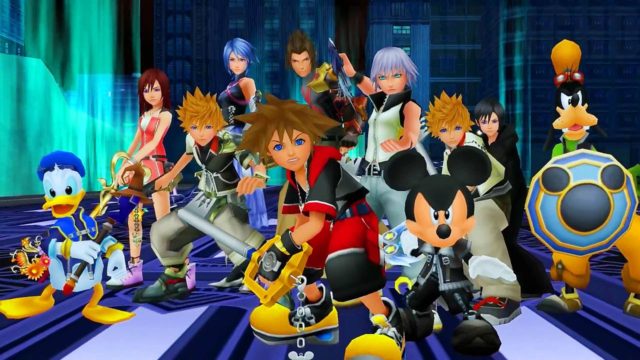
In Conclusion
From what I’ve played of Kingdom Hearts III, it seems like this grand finale is going to pull from the entire series timeline. Lots of ongoing stories are coming to a head, as Kingdom Hearts III is said to be the conclusion of the entire Xehanort Saga. If you want to fully appreciate this final act, you’ll have a long road of Kingdom Hearts games ahead of you.
The games should be played in order of release, and if you wanted to play the minimum amount of games, all you need is the 1.5+2.5 HD Remix and 2.8 Collection, or the Story So Far bundle. In short, here’s how it goes:
- Kingdom Hearts (Necessary)
- (Re:) Chain of Memories (Necessary, though cutscenes can be watched if not played)
- Kingdom Hearts II (Necessary)
- 358/2 Days (Skippable game, cutscenes should be watched)
- Birth By Sleep (Necessary)
- Re: Coded (Skippable)
- Dream Drop Distance (Necessary)
- Fragmentary Passage (Skippable)
- Back Cover/Union Cross (Skippable game, story should be read-up on)
Leave any questions or comments about this list below, and let us know what you think is in store for the series after Kingdom Hearts III.

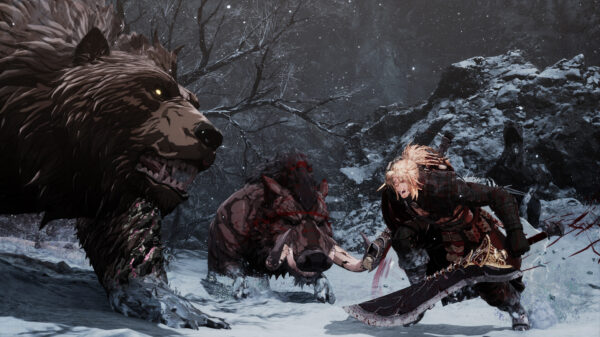
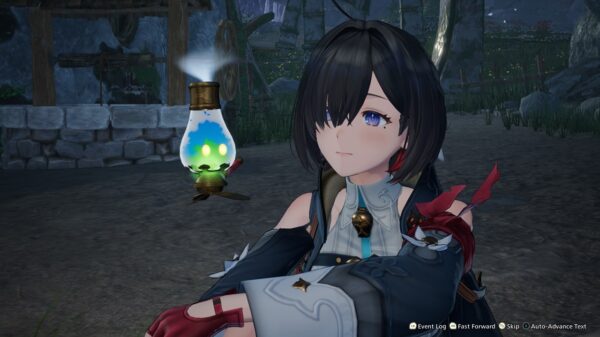


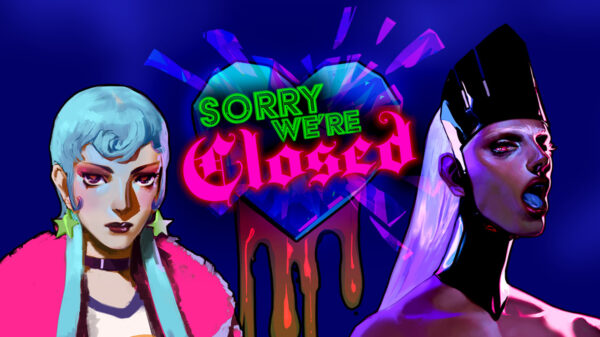




























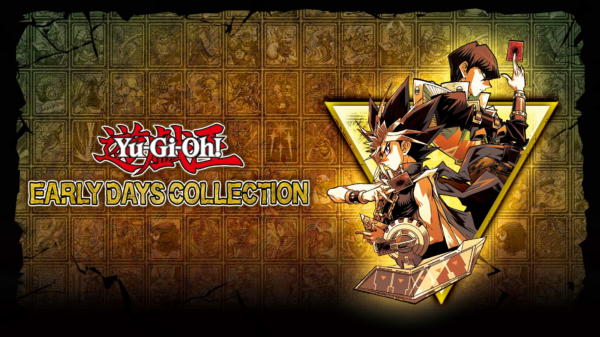
























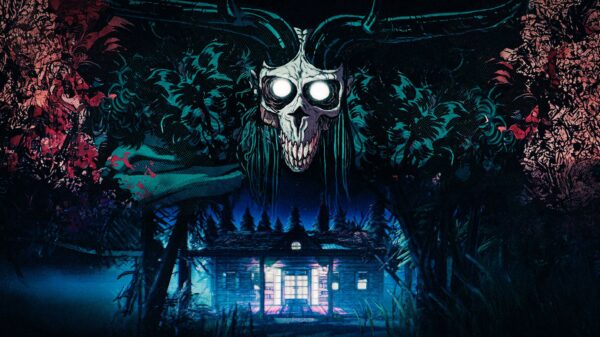

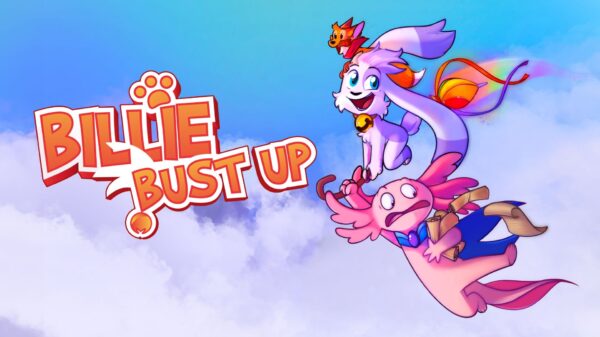

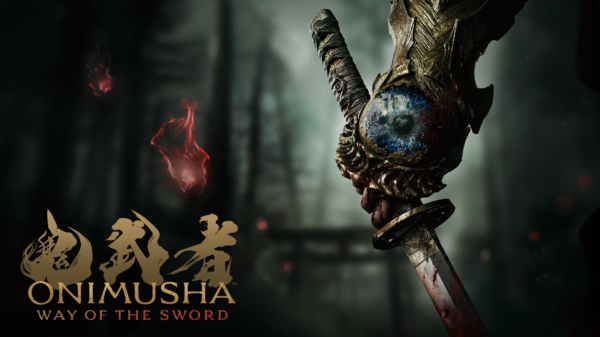









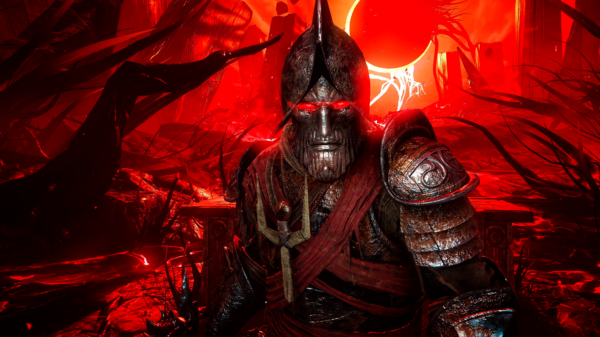
























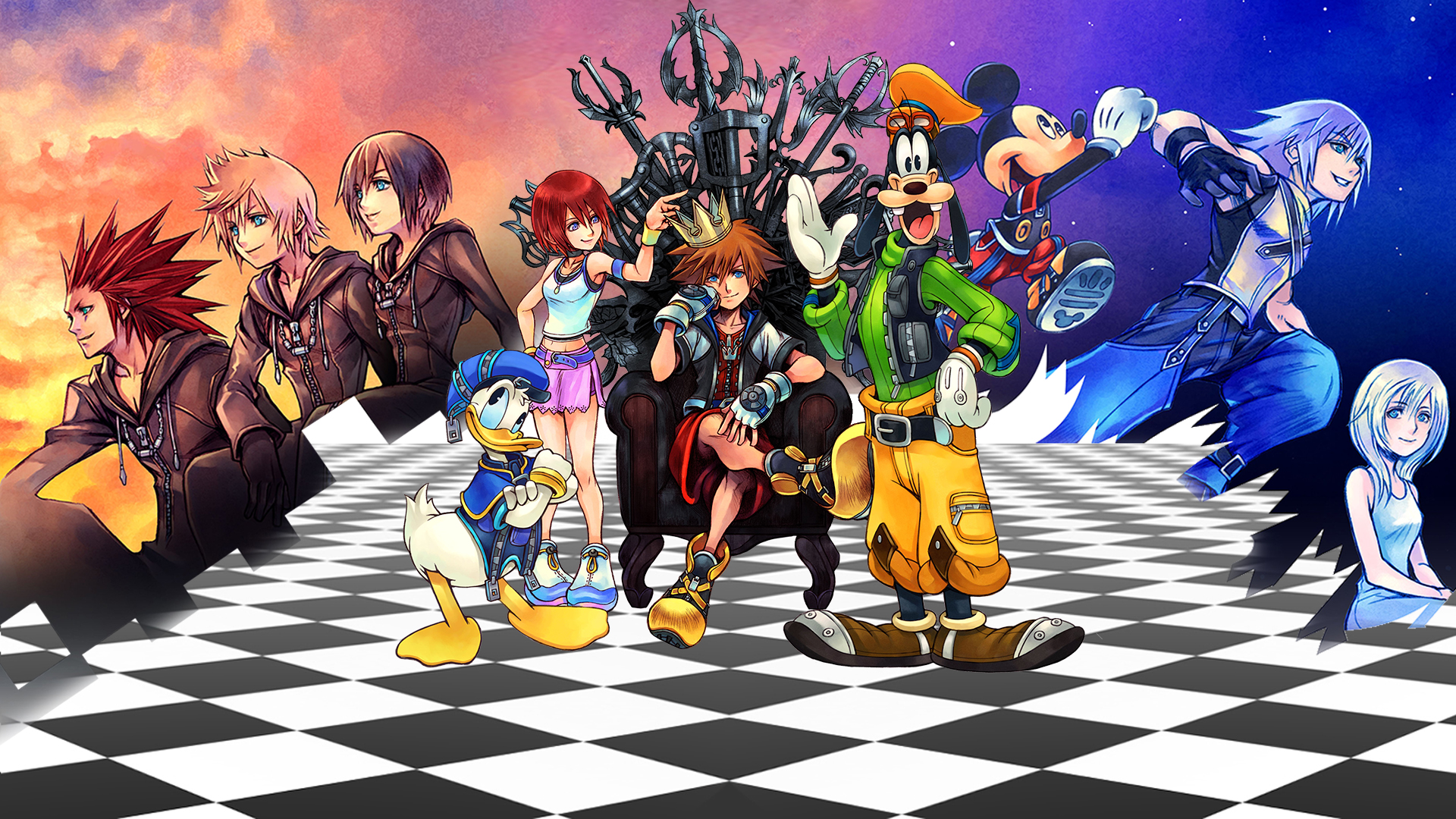


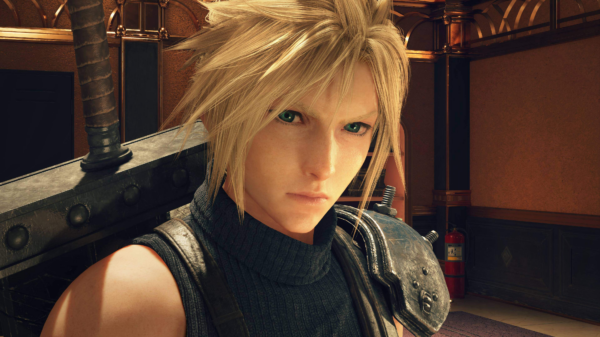

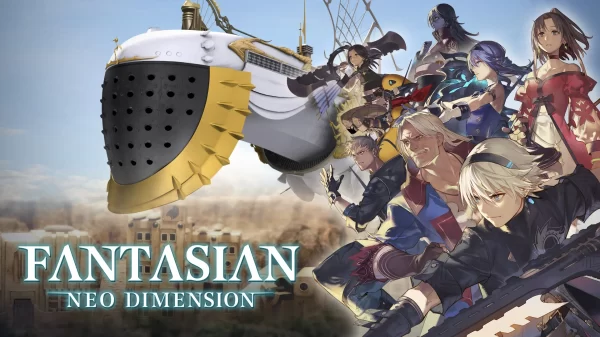
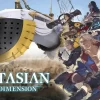
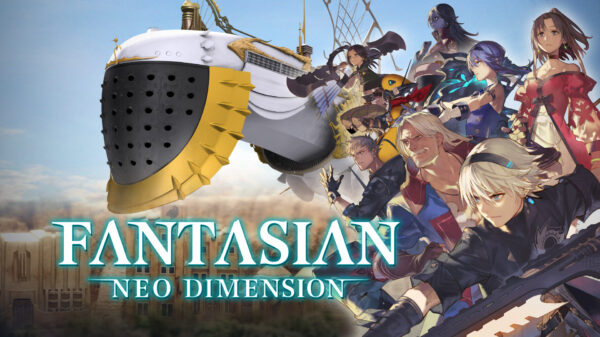
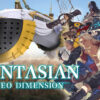
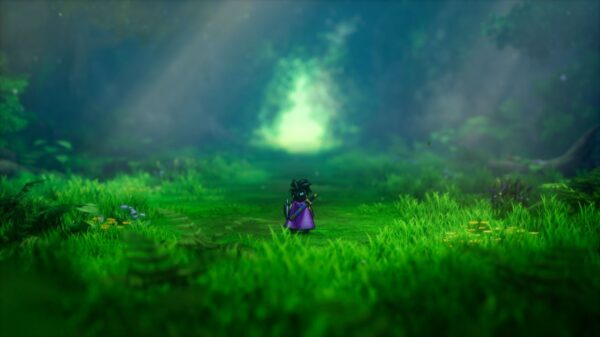
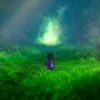
Dimitra
November 21, 2020 at 3:56 am
Thank you so much for this! I’ve been wanting to get into this series for some time and now I’m going to finally start!
Carson
February 15, 2021 at 2:14 pm
its probably the most confusing story EVER but you appreciate the heck out of completing the games. i suffered through a few and during the playthroughs i wanted to quit but i kept pushing and glad i did! just finished dream drop distance on ps4 and back here to see what is next…!
Aaron
May 29, 2021 at 6:00 pm
Great article. I played KH1, KH2, and KH 358/2 and had no clue what was going on with all the remixes/mobile games/”sequels”.
Sounds like I just need to cover Birth by Sleep and Dream Drop Distance before KH3. Easy.
Pingback: Can you open the shell in Ursula’s lair? – Gaming Section : Magazine Gaming, E-sport, jeux vidéo, Reviews, Trucs & Astuces
Pingback: Can I skip Atlantica? – Gaming Section : Magazine Gaming, E-sport, jeux vidéo, Reviews, Trucs & Astuces
Pingback: Is rechain of memories worth playing? – Gaming Section : Magazine Gaming, E-sport, jeux vidéo, Reviews, Trucs & Astuces
Pingback: How long is re chain of memories? – Gaming Section : Magazine Gaming, E-sport, jeux vidéo, Reviews, Trucs & Astuces
Pingback: How many floors chain of memories? – Gaming Section : Magazine Gaming, E-sport, jeux vidéo, Reviews, Trucs & Astuces
Pingback: La chaîne de souvenirs de Kingdom Hearts est-elle nécessaire ? - Taj.ma
Malachi
April 7, 2023 at 2:11 pm
I really played most of the kingdom hearts games but this was a entertaining article so thanks
Malachi
April 7, 2023 at 2:12 pm
I really played most of the kingdom hearts games but this was a entertaining article so thanks a bunch for making this
Axel Hearts
December 17, 2023 at 10:03 pm
None should be skipped. It’s all connected and every game has info about something to come. At least watch re:coded and fragmented passage. Aquas story leads into 3. It’s all a spiders web that weaves through eachother.